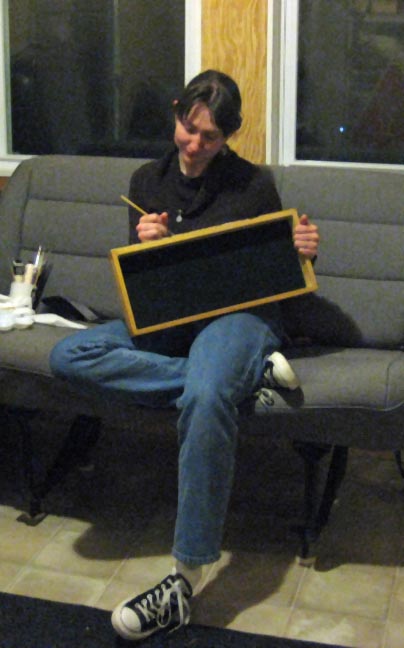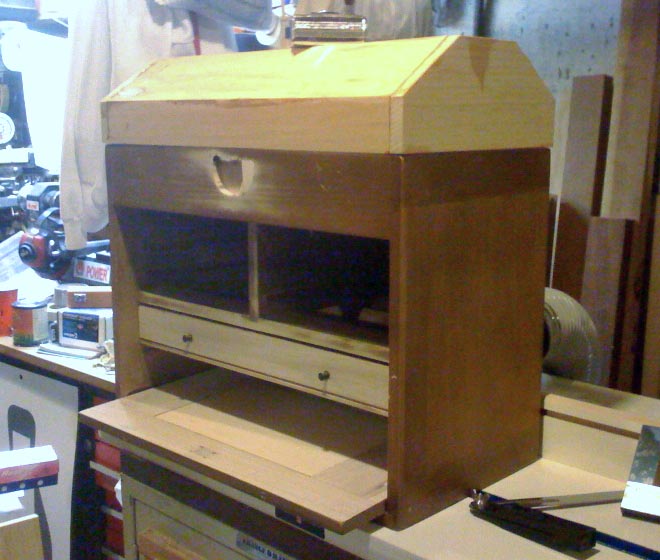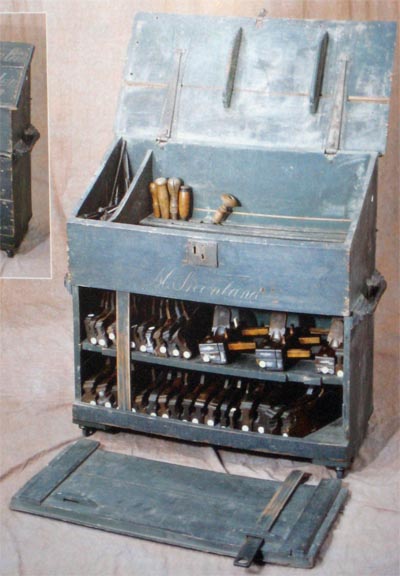|
An Adaptation of 16th Century examples
I have attempted to create a plausible example of a portable desk in the English style of the Sixteenth Century. Although this is not a replica of any one specific example, it does draw much of its inspiration from a writing box which likely belonged to King Edward VI. |
Portable desks were a sign and symptom of the Renaissance. Increased popularity of literacy and travel in the Fifteenth Century created the market, and
craftsmen throughout Europe responded with a variety of slopes, writing
boxes, and portable desks for the organization and transport of writing
materials and documents. The formidable construction and locking
covers of the larger portable desks made them well suited for storing
valuables as well, making them in particular the possessions of the
well-to-do; status symbols of the merchant class, the clergy, and the
royalty. Built to withstand the rigors of travel, they often
resembled the iron bound chests with which they competed for space on
wagons and in ship’s holds. When opened, they displayed the rich
materials and fine art to which their wealthy owners were
accustomed.
|
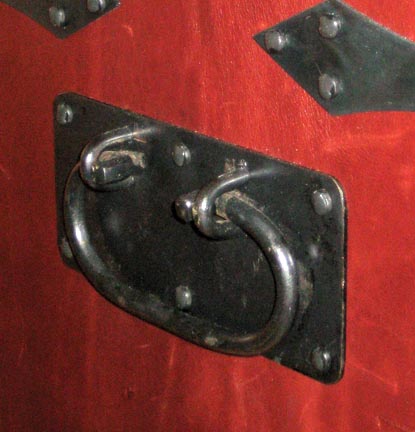 | 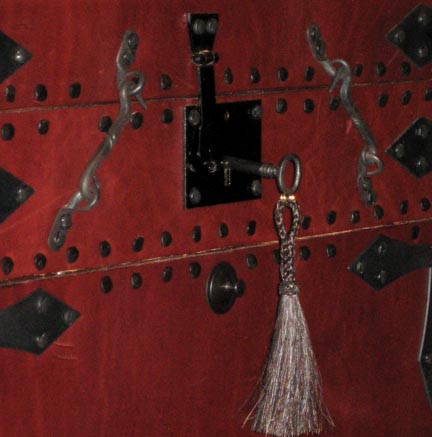 | 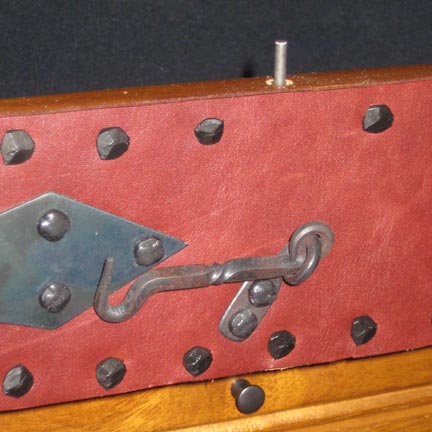 |
| Trunk Carry Handle. As in period examples, the handles extend only ~90 degrees. | Key Lock, Hooks, and Panel Knob. The hooks resist sideways motion of the cover. The key tassel is horse hair. | The hooks rest out of the way of the front panel. The top of a pin lock can be seen above. |
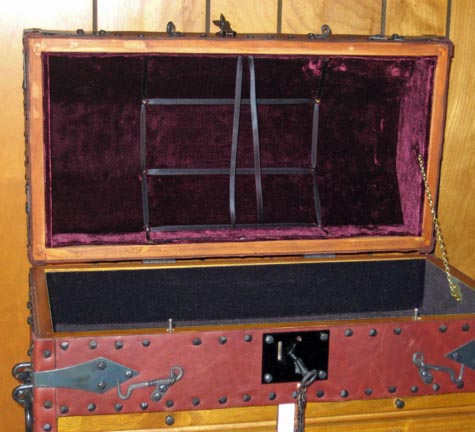 | ||
| Silk Velvet Lining. Hiding the perfectly fitted interior of the new cover. Sigh. |
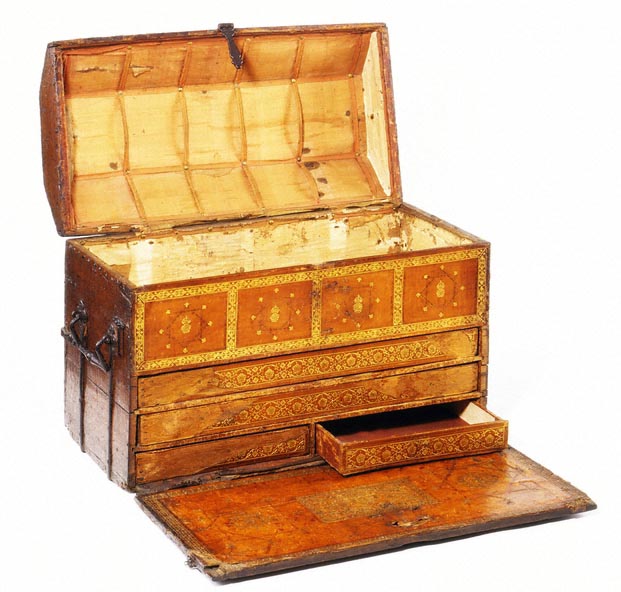 | 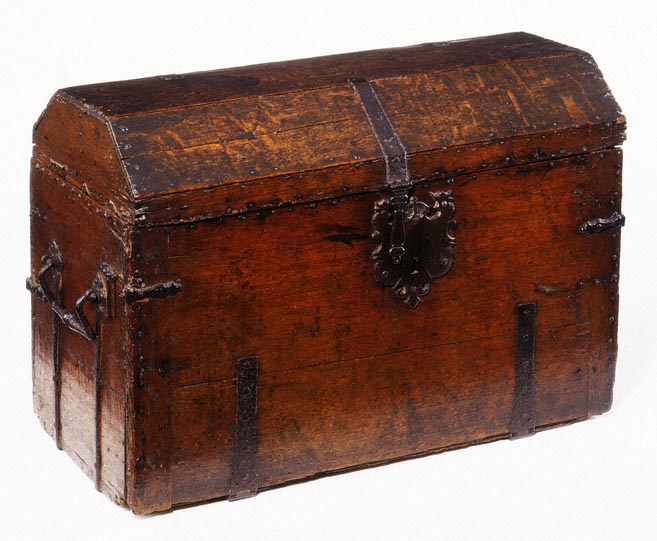 | 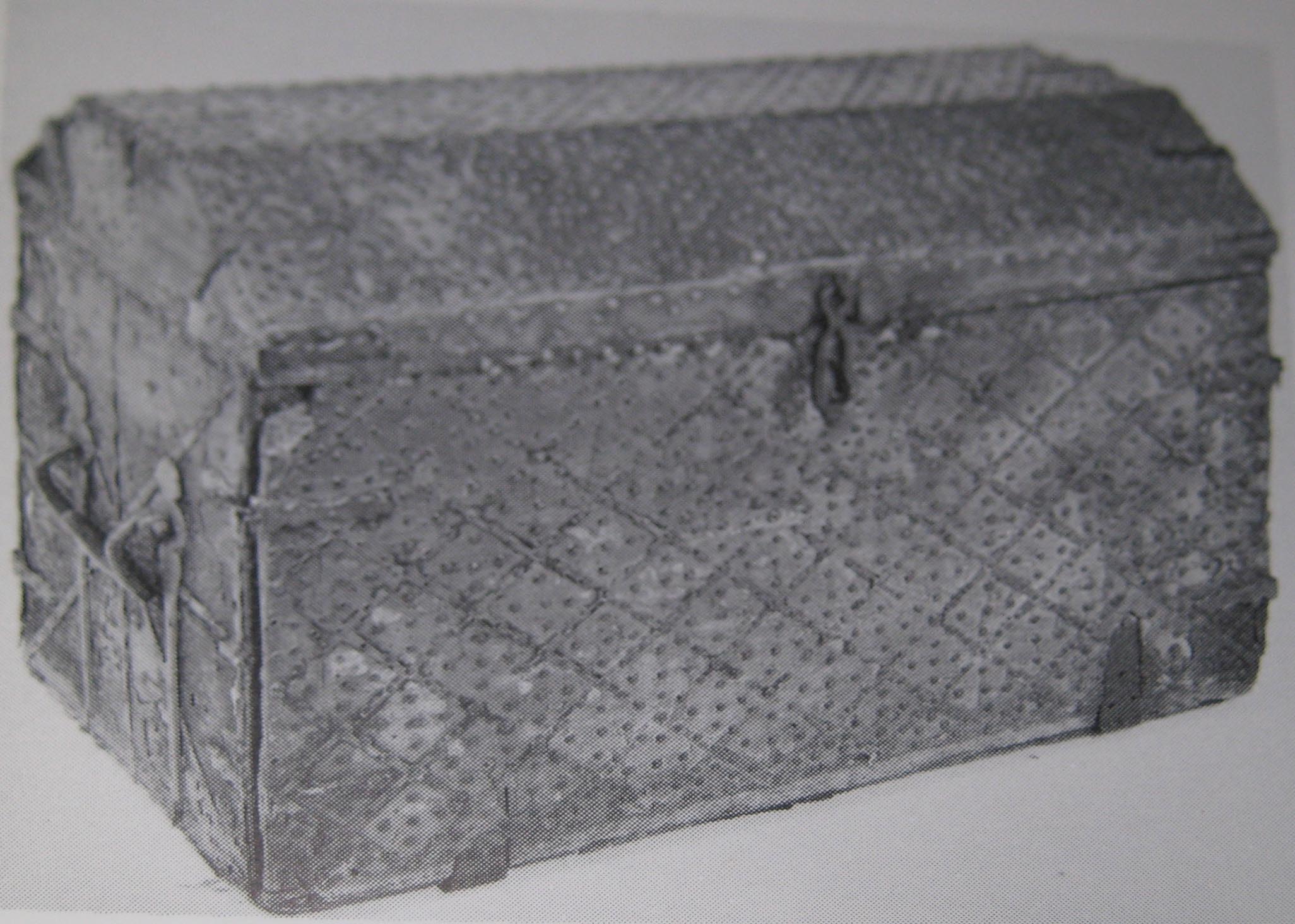 |
| Writing Box of Edward VI Victoria & Albert Museum | Writing Box of Edward VI Victoria & Albert Museum | Coffermaker's Toolbox, believed to have been built in the same shop as King Edward's writing box. Oak Furniture, The British Tradition |
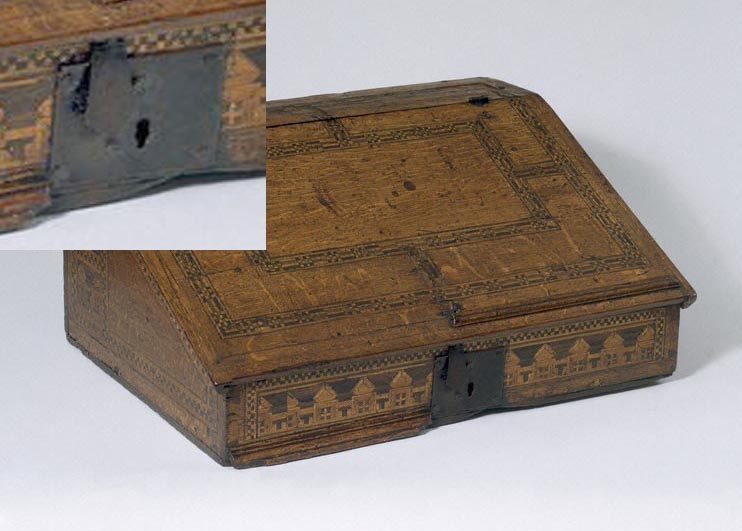 | 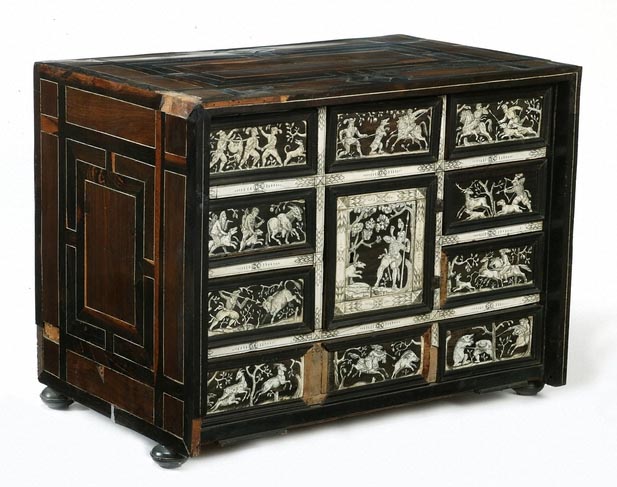 | |
| Writing box with a common lock plate, ca 1600 Victoria & Albert Museum | Stowable front panel, ca 1600. This box also inspired the drawer-front artwork. Victoria & Albert Museum |
| ||||||||||
| ||||||||||
|
 |  |
| The unfinished writing box debutes at Panteria. | Max, and the finished box at the Fort Knox demo. |
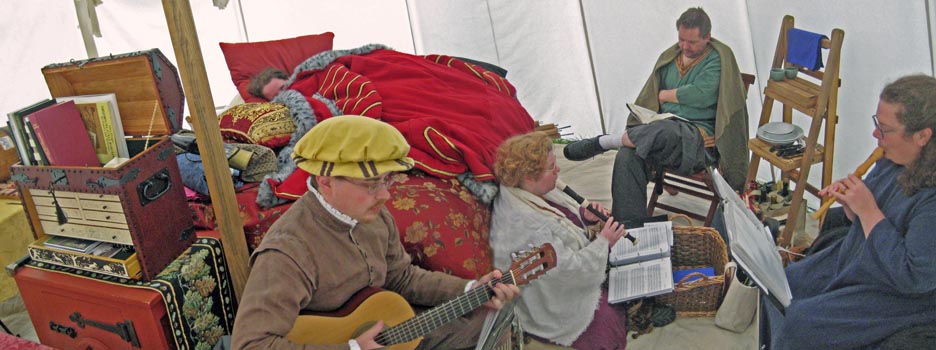
|
Bibliography: Portable Writing Desks, by David Harris, Shire Publications, 2001 The Toolbox Book, by Jim Tolpin, The Taunton Press, Inc., 1998 Furniture and Interior Decoration of the Italian Renaissance, by Frida Schottmuller, New York Brentano's, 1921 Oak Furniture, The British Tradition, by Victor Chinnery, Antique Collectors' Club Ltd., Woodbridge, Suffolk, 1979 |
|
Webliography: |
|
Sources for supplies: Horton Brasses, for much of the iron hardwareShenandoah Antique Restoration for the iron hasp lock Rockler, for pin locks and brass chain lid supportDistinctive Fabric, for 100% silk fabric JK Ribbon, for 100% silk ribbon |



